by Judy Kautz, OSU Extension Master GardenerThere are many reasons to grow your own garlic. First, it’s really easy to do. It is a good idea for new vegetable gardeners to include a patch of garlic. The plants are bothered by few pests and diseases; even the deer and rabbits that nibble on other crops rarely venture into the garlic patch. It’s also extremely low maintenance, requiring little fussing during the growing season. The best reason to plant garlic, however, is flavor. Home grown cloves are packed with a depth of flavor that you’ll never find with supermarket varieties. Garlic plants are bothered by few pests and diseases; even the deer and rabbits that nibble on other crops rarely venture into the garlic patch. And while garlic cloves can technically be planted in early spring, autumn is the best time to plant if you want really big bulbs. Time your planting for about four to six weeks before the ground is expected to freeze (traditionally around Halloween). This gives the cloves time to set roots before the arrival of winter. Niki Jabbour of Garden Gate magazine gives us an excellent summary on growing garlic. For big bulbs, garlic is best planted in autumn, about four to six weeks before the first expected frost. Break apart the cloves and sort them - the biggest for planting and the rest for the kitchen. Garlic can be grown almost anywhere in North America, from USDA zone 2 and warmer, although certain varieties do better in very cold regions. There are two main types of garlic: hardneck and softneck. Hardneck garlic produces a long flowering stalk, called a “scape,” in early summer. Beneath the soil, a single row of cloves develops around this central stalk. Hardneck garlic produces fewer cloves per bulb than softneck varieties, but each individual clove is larger, and many believe it to be more flavorful. Hardneck types are also usually more winter hardy than softneck garlic and are therefore the garlic of choice for short-season gardeners. Once harvested and cured, hardneck garlic stores for up to six months. Clip hardneck garlic scapes when they look like this to get bigger garlic bulbs. Softneck garlic is not usually as winter hardy as hardneck garlic and is often grown in milder regions. The bulbs are packed with cloves — sometimes more than 20 in a bulb! — that range in size from small to large. They do not produce a central scape, but instead have soft, flexible stems and leaves. This is why you’ll sometimes see softneck garlic braided for storage. And speaking of storage, softneck garlic stores very well, with the cloves remaining firm and flavorful for up to a year.
Where do you buy garlic for planting? There are three places to buy garlic for planting: your local garden center, the farmers market or an online catalog. Don’t buy garlic from the supermarket, as it may not be the right type for our climate and could also have been treated with a sprout inhibitor. If buying garlic locally, choose plump bulbs with no brown spots or mold. As long as bulbs were grown locally, any you buy at the farmers market will be fine in your garden. When choosing garlic to grow, don’t be shy about trying different varieties. There are hundreds of hardneck garlic varieties and dozens of softneck ones available to gardeners. While all taste like garlic, there are subtle flavor and pungency differences between types and varieties. How do you grow your own garlic? Garlic grows best in a site with at least six hours of sun each day. It also needs well-draining soil. Before planting, loosen the soil and dig in 1 to 2 inches of compost or aged manure to improve the soil. Once the garden is prepped, gently break the bulbs into individual cloves. Separate varieties into different containers. Don’t plant naked cloves! Leave the papery covering intact when you plant as it protects the cloves from potentially damaging microbes. Does clove size matter? The smallest cloves won’t size up into large bulbs. Set these aside to be taken to the kitchen. Also take a close look at the largest cloves: Sometimes you can see that they’ve split in two within their papery husk. If planted, they’ll form two side-by-side plants and this can result in stunted bulbs. So also toss large split cloves into the kitchen basket. Plant garlic in a grid pattern, spacing the cloves 6 inches apart and planting them 2 to 3 inches deep. After the bed has been planted, water well and top dress with a slow-release organic bulb fertilizer. Then mulch the soil with a 3-inch-deep layer of shredded leaves or straw. This reduces weed growth and insulates the bed for winter. Caring for your garlic should include feeding. As the weather warms in spring, you’ll notice green garlic shoots emerging from the mulch. At this point, apply a balanced granular organic fertilizer. Garlic appreciates a steady supply of nutrients, and feeding the plants results in bigger bulbs. This initial feeding can be followed up with an application of a liquid organic fertilizer, such as fish emulsion, when the garlic scapes are removed (on hardneck types) in mid- to late spring. With regard to watering, if there has been no rain, deep water the bed once a week with 1 to 2 inches of water. You can use a watering wand to hand water or snake a soaker hose through your garlic patch. While garlic growing problems are rare, keep an eye out for white rot, a fungal disease that affects onions and garlic. The first sign is yellowing leaves or stunted growth with the bulbs failing to develop well. Crop rotation and buying disease-free planting stock are the best way to avoid white rot. No matter if you’re growing softneck or hardneck garlic, it’s time to harvest when half of the leaves have yellowed. Use a garden fork to loosen the soil and gently lift the bulbs. This reduces damage, which could shorten storage life. Brush off soil clumps clinging to the roots with your gloves. Before you store homegrown garlic, it needs to cure. Curing helps develop the flavor and prepare the bulbs for long-term storage. Here’s how to do it: Hang the plants, with the foliage still attached, in a room, shed or site that is out of direct sunlight, sheltered from rain, and well ventilated. A temperature in the range of 75 to 80 degrees F is ideal. If you have a laundry rack, use it to hang the bulbs. You can also lay them flat on a mesh screen or newspapers, flipping them over every day or two so they cure evenly for two weeks. After they’ve cured, clean the bulbs by trimming the leaves and roots. I leave a 2-inch stem and trim the roots to about 1 inch. I also remove the outer wrapper if it’s very dirty. Place the bulbs in a single layer in a box, basket or hang in mesh bags. Store garlic in a cool, well-ventilated room that is 60 to 65 degrees F. A dry basement is ideal, but you can also keep it in a pantry or storage room. If you don’t have a good spot to store garlic, you can freeze peeled cloves on a parchment-lined tray. Once they’re frozen, bag them up and store in the freezer. Given its essential status in the kitchen, every garden needs a patch of garlic. It’s easy to grow, reliable and delicious. No space for a veggie garden? Tuck garlic cloves in ornamental beds, where the pungent aroma of the plants may even chase away insects and critters. Give garlic a try!
0 Comments
by Judy Kautz, OSU Extension Master GardenerNo flower can lift someone’s spirits quite like sunflowers. They are bright and cheery, and as warm and inviting as the sweet summer sun. With brilliant yellow petals, also known as “rays,” sunflowers have an unmistakable sun-like appearance that has made them a crowd favorite, especially in the summer months. Sunflowers come in a number of varieties—ranging from small to very large, from having yellow petals to red. However, there is more to sunflowers than meets the eye. While they are stunningly beautiful, they also are rich in history and meaning. Sunflowers symbolize adoration, loyalty and longevity. Much of the meaning of sunflowers stems from its namesake, the sun itself. These flowers are unique in that they have the ability to provide energy in the form of nourishment and vibrancy—attributes which mirror the sun and the energy provided by its heat and light. Sunflowers are known for being “happy” flowers, making them the perfect gift to bring joy to someone’s (or your) day. Who can resist the cheery sunflower in the landscape! Sunflowers originated in the Americas in 1,000 B.C. and were then cultivated as a valuable food source for centuries. With the European exploration of the New World, the flower’s popularity spread, as the rest of the world began to appreciate its beauty and sustenance. Today, sunflowers remain a highly recognized flower, admired for their sunny charm and delightful disposition. These beauties are also still sourced for their seeds, as well as oils used for cooking and skin emollients. For a flower that reflects so many of the sun’s positive characteristics, it isn’t surprising that people enjoy basking in the sunflower’s warming glow so much. With bright blooms that go all summer, sunflowers are heat-tolerant, resistant to pests, and attractive to pollinators and birds. They make beautiful cut flowers and their seeds (and oil) are a source of food for birds and people! The sunflower (Helianthus annuus) is an annual plant with a large daisy-like flower face. Its scientific name comes from the Greek words helios (“sun”) and anthos (“flower”). The flowers come in many colors (yellow, red, orange, maroon, brown), but they are commonly bright yellow with brown centers that ripen into heavy heads filled with seeds. Sunflowers are heliotropic, which means that they turn their flowers to follow the movement of the Sun across the sky east to west, and then returns at night to face the east, ready again for the morning sun. Heliotropism happens during the earlier stages before the flower grows heavy with seeds. There are tons of varieties of sunflowers available today, so there’s bound to be one that fits your garden. Choose between those with branching stems or single stems, those that produce ample pollen for pollinators or are pollen-free (best for bouquets), those that stay small or tower above the rest of the garden, or those that produce edible seeds! A fairly fast-growing flower for their size, most sunflower varieties mature in only 80 to 95 days. The largest sunflower varieties grow to over 16 feet in height, while smaller varieties have been developed for small spaces and containers and rarely grow larger than a foot tall! The flower heads can reach over 12 inches in diameter within the large seeded varieties. 'Mammoth' is the traditional giant sunflower, sometimes growing to more than 12 feet tall. When planting sunflowers, first and foremost, find a sunny spot! Sunflowers grow best in locations with direct sunlight (6 to 8 hours per day); they require long, warm summers to flower well. Choose a location with well-draining soil. The planting spot shouldn’t pool with water after it rains. Otherwise, sunflowers aren’t too picky about soil, but for the best results, it shouldn’t be too compacted. They have long tap roots that need to stretch out; in preparing a bed, dig down 2 feet in depth and about 3 feet across. Sunflowers are heavy feeders, however, so the soil needs to be nutrient-rich with organic matter or composted (aged) manure. Or, work in a slow release granular fertilizer 8 inches deep into your soil. If possible, plant sunflowers in a spot that is sheltered from strong winds, perhaps along a fence or near a building. Larger varieties may become top-heavy and a strong wind can be devastating. Sunflowers are a diverse bunch! Here are a few varieties you may want to try: The towering ‘Mammoth’ variety is the traditional giant sunflower, sometimes growing to more than 12 feet tall. Its seeds are excellent for snacks and for feeding the birds, too. ‘Autumn Beauty’: One of the most spectacular cultivars, the ‘Autumn Beauty’ has many 6-inch flowers in shades of yellow, bronze, and mahogany on branching stems up to 7 feet tall. ‘Sunrich Gold’: A great flower for bouquets and arrangements, this sunflower grows to be about 5 feet tall and produces a single 4- to 6-inch flower. The big, no-mess, pollenless flowers have rich, golden-yellow rays and green-yellow centers. ‘Teddy Bear’: Just 2 to 3 feet tall, this small sunflower is perfect for small gardens and containers. The fluffy, deep-gold, 5-inch blossoms last for days in a vase. Sunflowers make wonderful bouquets, but here are a few tips: 1) For indoor bouquets, cut the main stem just before its flower bud has a chance to open to encourage side blooms. 2) Cut stems early in the morning. Harvesting flowers during middle of the day may lead to flower wilting. 3) Handle sunflowers gently. The flowers should last at least a week in water at room temperature. 4) Arrange sunflowers in tall containers that provide good support for their heavy heads, and change the water every day to keep them fresh. Fall is a prime time for sunflowers; enjoy them to the fullest! Autumn Beauty has many 6 inch flowers in bronze and mahogany.
by Judy Kautz, OSU Extension Master GardenerOklahomans definitely have a love affair with our crape myrtles; in many areas you can see them on practically every street. And why not? Few plants can match the crape myrtle’s spectacular summer flowers, colorful autumn foliage and attractive sculptured wood. Known as the “lilac of the South” they are truly versatile plants; here are some tips if you are thinking about adding a crape myrtle to your landscape. Crape myrtles, Lagerstroemia indica, have many landscape uses: planted together, they make a great hedge or screen for your yard, while a single plant can create a distinctive focal point in a garden bed. Crape myrtles also make wonderful foundation plants around your house. Summer is a great time to buy crape myrtles because it is easy to see bloom color. However, pay careful attention to the tag on the plant to make sure it is the right size for your garden. These plants range from less than 3 feet tall to cultivars that may reach 30 feet! Choose the right size plant for your needs, avoiding buildings and power lines if you plant larger types. Medium selections from 12 to 14 feet are perfect for a small courtyard, and dwarf selections look lovely in containers or perennial beds. When you plant, remember that crape myrtles love sun and will not bloom without plentiful sunshine. For planting, early spring through September are optimum times, because these plants love heat. In our hot summer soils, they will respond by growing vigorous roots. However, as the soil cools in the fall, root development dramatically slows. If you plant crape myrtles after early October, they may dehydrate and die during the winter. When planting, water your crape myrtle well before you place it in the ground, and keep it watered during hot periods. Mulch to conserve moisture and reduce weeds, and apply a general fertilizer; make sure you follow the recommended directions for use that are marked on the container. If you already have established crape myrtles in your landscape, you may be wondering about how to prune them. Some gardeners don’t prune them at all, but many do prune after the plants have bloomed. After crape myrtles bloom, they set seed and the small round seed pods may look unsightly or weigh the limbs down. You certainly can trim these pods just below the clusters using sharp clippers. You may even get new shoots of growth and a second bloom before frost after pruning! You may also want to remove the shoots from the base of the plant, especially if you want a tree-like appearance. Crape myrtle seed pods may be pruned to improve appearance, byt they may also be left on the plant. Powdery mildew is the main disease concern of crape myrtles, but there are many disease-resistant cultivars available, thanks to the efforts of the National Arboretum breeding program and the research of Dr. Carl Whitcomb. Dr Whitcomb has also created hybrids with new and enhanced colors, drought tolerance and cold hardiness, including the ever-popular, bright red Dynamite. If you do develop powdery mildew on your plants, you can spray the foliage with a fungicide like Fertilome for this purpose. There are several fungicides available at your local garden center. The Dynamite crape myrtle, developed by Dr Carl Whitcomb, is one of the most popular because of its deep red color and disease resistance. Crape myrtles are lovely in our gardens and they are relatively low maintenance and disease-resistant. For that deep red beauty in summer, try Dynamite or Red Rocket, and for a burgundy red, try Siren Red! All these varieties are medium-sized cultivars that grow from 10 to 15 feet. For beautiful pinks, try Rhapsody in Pink or Pink Velour, also medium sized plants. There are many, many other varieties and colors available, so plan to add one of these lovelies to your garden this year! You will be so glad you did! The Pink Velour variety sports brilliant pink blooms that develop all summer.
|
Welcome to Dishing the Garden Dirt!
|
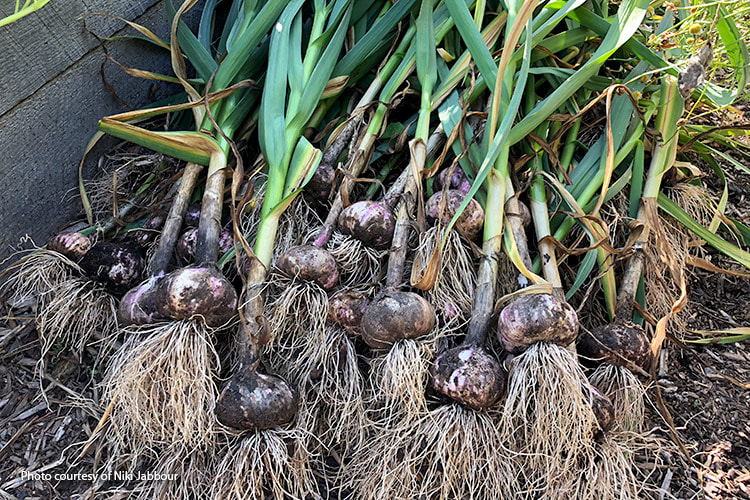
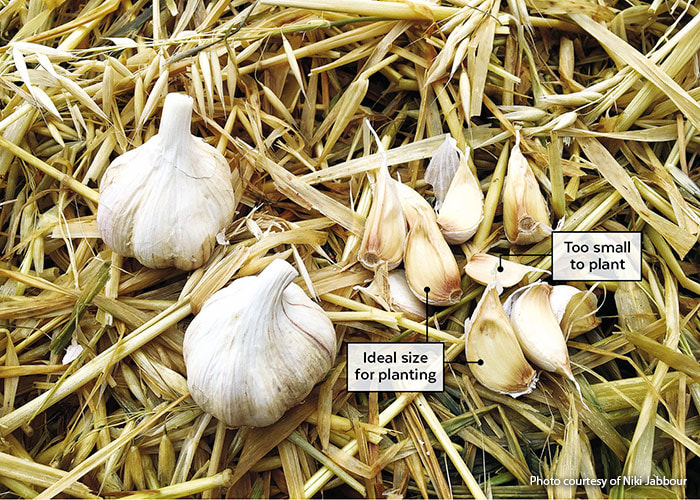
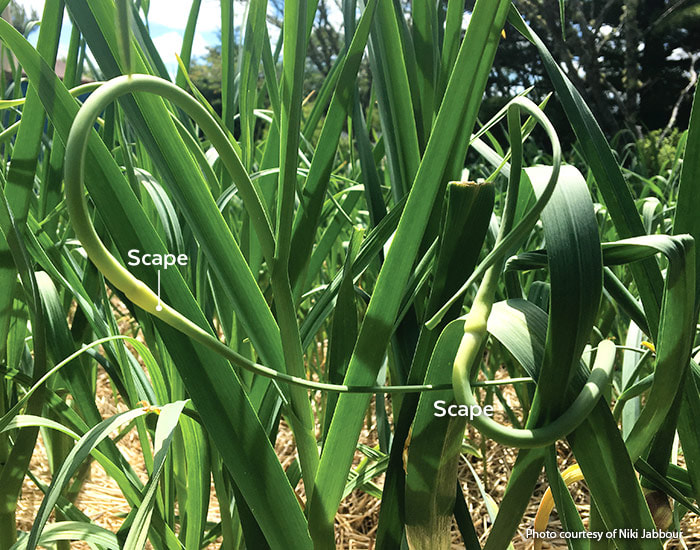
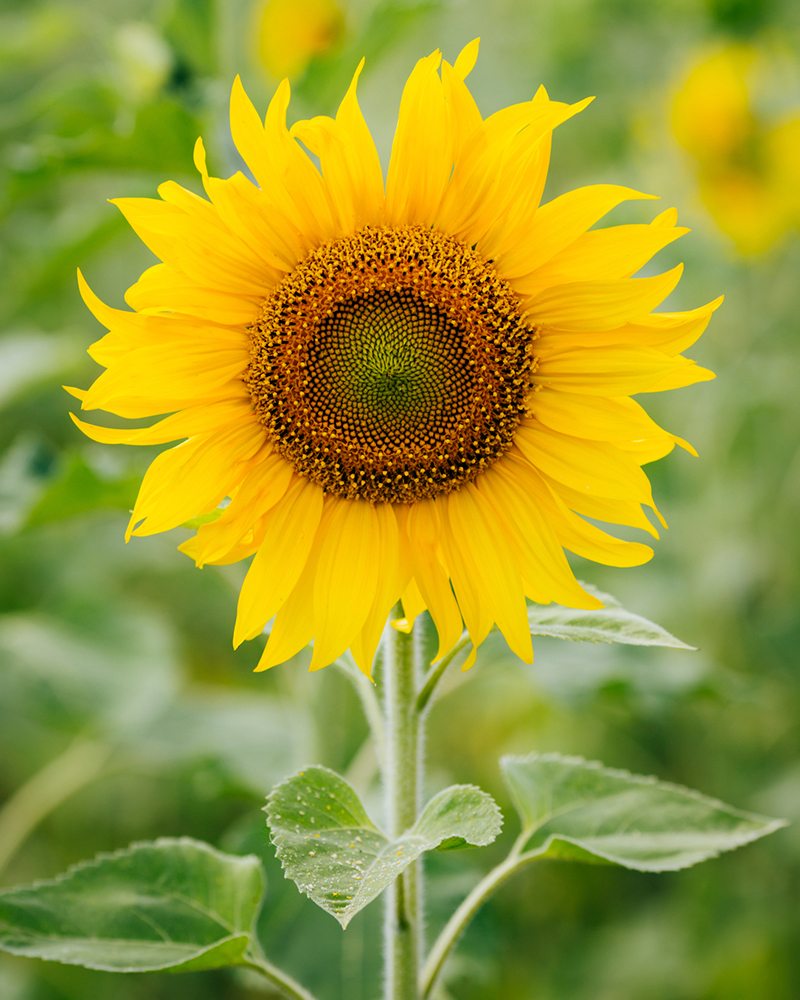

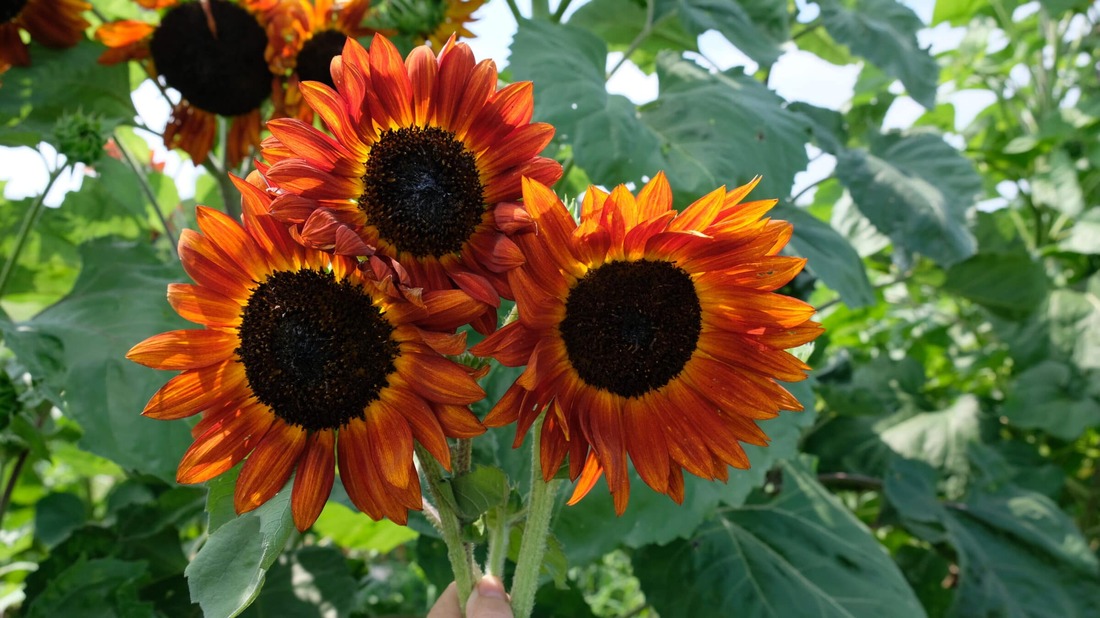
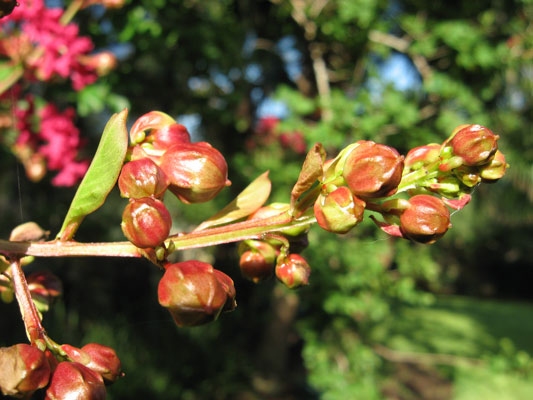
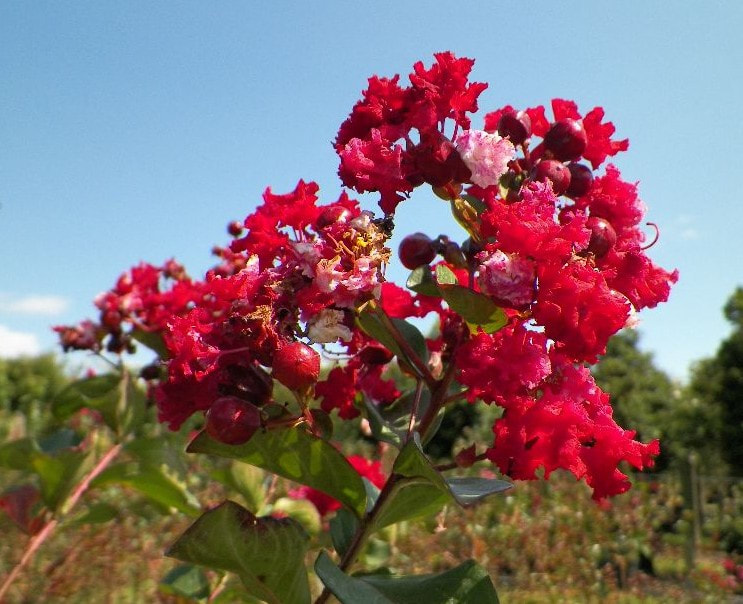
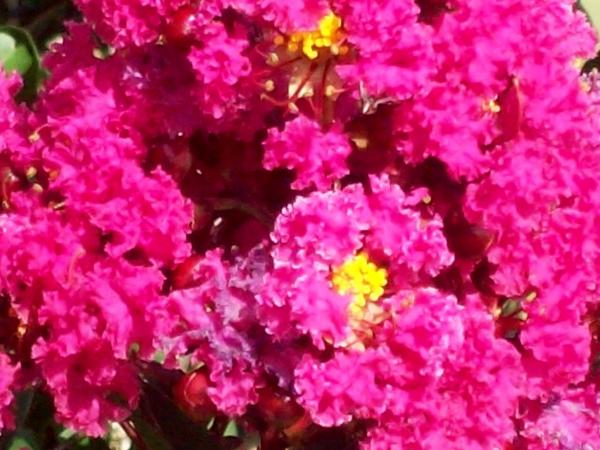
 RSS Feed
RSS Feed